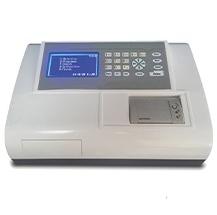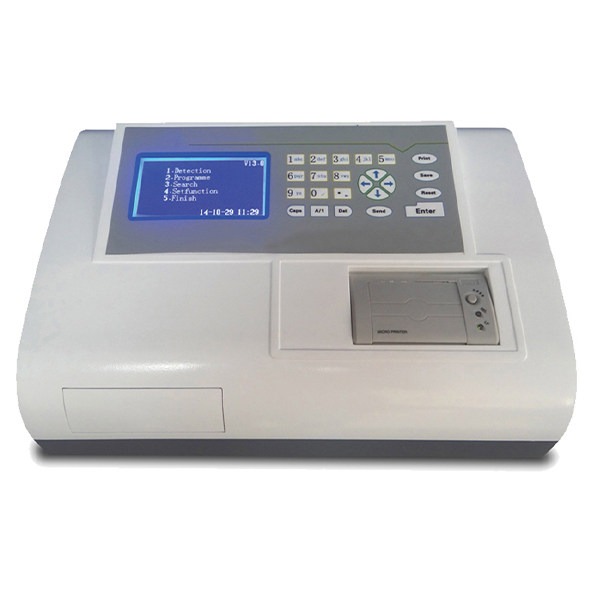Faced with so many types of microplate readers, laboratories often have a feeling of difficulty in choosing. Generally speaking, the microplate reader used for enzyme immunoassay colorimetry can be divided into ordinary microplate reader, multi-functional automatic microplate reader, automatic enzyme immunoassay system, etc. The function of an ordinary microplate reader is equivalent to a Microplate colorimeter, while the multi-functional automatic microplate reader not only has the function of microplate colorimetry but also has various detection functions such as enzyme label kinetics, ultraviolet light, and even agglutination. The automatic enzyme immunoassay system has reagents “Open” and “restricted”. The so-called “open” reagent means that ELISA reagents of different brands can be used in the instrument, while the “restricted” reagent must use the special enzyme immunoassay reagent for the instrument.
4 Principles to Choosing Microplate Readers
When choosing a microplate reader, the laboratory should generally follow the following principles:
1. Choose microplate readers according to work needs
Do not deliberately seek microplate readers with more functions. First, if the microplate reader has too many functions, it is prone to failure. Second, some functions such as enzyme label kinetics or agglutination may not be used at all. If the microplate reader to be purchased is mainly used for qualitative determination, the software system required for perfect quantification is not required. As for the fully automatic enzyme immunoassay system, it is more suitable for blood banks or large hospitals with a relatively heavy workload, but it is not necessary for laboratories with low daily workloads.
2. Choose microplate readers according to their performance
The performance indicators of the reaction microplate reader mainly include the measurement wavelength range, filter configuration, detection speed, absorbance range, linear range, resolution, accuracy, precision, etc.
3. Choose microplate readers according to the finances of your laboratory
There are many types of microplate readers. Due to different performances, the price naturally varies greatly. The laboratory can choose a microplate reader with the most suitable performance/price according to its financial resources.
4. Choose microplate readers according to after-sales service
After the laboratory equipment (microplate readers) is purchased, it is the same as the household appliances you use at home. During use and after some time use, there may be problems with warranty or maintenance. Therefore, you must choose enzymes from microplate reader manufacturers with good after-sales service.

A Step-by-Step Guide to Choosing Microplate Readers
After determining the selection principle, it is how to choose. The first step of selection is to obtain information about the microplate reader. Generally, there are several ways:
1. Consult and visit with colleagues in many laboratories who have purchased different microplate readers to obtain the most direct information on the use effect.
2. Information advertisements and introductions of microplate reader manufacturers or sellers.
3. Evaluation report of microplate readers from an authoritative organization.
Second, after obtaining as much microplate reader information as possible, it is to compare the performance indicators of different types of microplate readers, choose one or two, or three that are more suitable for this laboratory, and then consult the manufacturer in detail to decide which one to choose for self-test.
Third, self-test microplate readers from the following aspects:
1. Appearance of microplate readers
The microplate reader should have the instrument name, model, serial number, manufacturer, date of manufacture, and power supply voltage. All adjustment knobs, buttons, and switches can work normally, and there is no obvious mechanical damage on the outer surface. The displayed text should be clear and complete.
2. The stability of microplate readers
Choose a wavelength of 492nm. At the absorbance of 0.0A, measure the spectral neutral filter with a nominal value of 1.0A (the measurement operation is carried out according to the instrument instructions), record the instrument’s indicated value or average value, and record the instrument’s indicated value or average value again after 10 minutes. The difference between the two measured values before and after should not exceed ±0.005A.
3. Accuracy of absorbance measurement
Select wavelengths of 405, 492, and 620nm, and use air as a reference to measure spectrally neutral glass filters with nominal values of 0.5 and 1.0A respectively. Use a special test plate instead of the microplate plate, and measure continuously 3 times according to the instrument instructions. Calculate the accuracy according to the following formula: AA=1/3(A, +A.+A3)—A: (A: is the standard value).
4. Repeatability of absorbance measurement
5. Linearity of microplate reader
6. Verification of measuring speed

